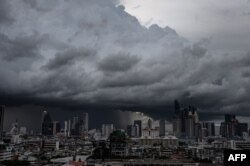International climate and environment agreements have a flaw which may jeopardize attempts to curb global warming quickly: they do not highlight the role trees play in creating rainfall and cooling the earth's surface, 22 scientists said on Tuesday.
Traditionally, international agreements have focused on how trees affect carbon levels in the atmosphere — living trees absorb carbon dioxide and deforestation releases carbon.
While that is important, it should not be the priority, the scientists said, while presenting results of their research at a virtual forestry symposium.
Tree help with formation of clouds
Trees bring moisture to the air, and release chemicals that can lead to the formation of clouds, Meine van Noordwijk, chief science advisor at the World Agroforestry Center, told the Thomson Reuters Foundation.
Considering only their carbon storage “means we miss a huge opportunity,” van Noordwijk said, particularly as more erratic rainfall brings droughts and other problems around the world.
Countries are under pressure to curb emissions fast enough to keep global temperature rise to well below 2 degrees Celsius, as agreed under the 2015 Paris Agreement on climate change.
But viewing trees as carbon stores alone is not enough to mobilize governments and the public to ramp up forest protection or grow more trees as fast as they need to, they said.
More shade needed in cities
The group of scientists called for a “significant revision” of national and regional strategies to reduce greenhouse gas emissions and adapt to climate change.
This includes planting more trees in cities, creating shade that naturally cools areas so people can spend less money and energy on air conditioning, the scientists said.
“The energy saving that can come from having the air conditioning of trees is gradually becoming better known,” van Noordwijk said, adding that some cities have begun recognizing the role trees can play.










